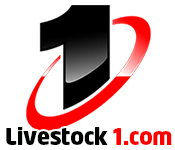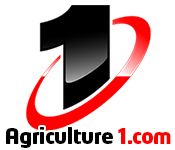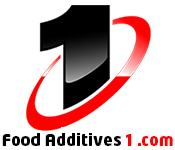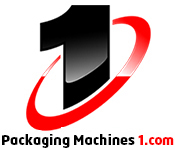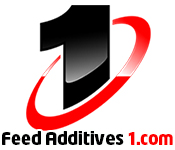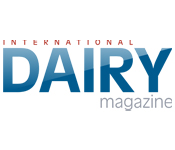Theme: Dairy Meet - Opportunity & Challenges for Future
Dairymeet 2016
Track 1: Global Dairy Trade
In the areas of Dairy Management and Extension a Composite Management Index for bovines as a determinant for enhancing milk production has been developed. Dairy industry value chain portrays the flows of commodity and value from animal and pasture inputs, through dairy processing and dairy processing, to brand development and marketing, shipping and wholesale distribution, to either food manufacturers or dairy retailing to the final consumers. The viability and profitability of small-scale milk production depend greatly on production costs and the efficiency of the dairy chain.
Relevant Conferences on Global Dairy Trade:
International Dairy Meet & Expo, June 29-30, 2016 New Orleans, USA; 2nd International Conference on Livestock Nutrition, July 21-22, 2016 Brisbane, Australia; 12th Biotechnology Congress, November 14-15, 2016 San Francisco, USA; 13th Global Food Manufacturing Conference, October 20-22, 2016 Kuala Lumpur, Malaysia; 12th International Conference and Exhibition on Food Processing & Technology, October 24-26, 2016 Istanbul, Turkey; American Dairy Science Association Annual Meeting, July 19-23, 2016 Salt Lake City, USA; International Dairy Forum 2016, Jan 24-27, 2016 Phoenix, USA; Dairy Strong Conference, January 12-14, 2016 USA; Dairy-Deli-Bake Seminar and Expo, June 05-07, 2016 Texas, USA; 44th Dairy Industry Conference, February 18-20, 2016 National Dairy Research Institute, India.
Track 2: Dairy Bacteriophages and Fermentation
Knowledge of phage-host interactions at a fundamental level is central to the design of rational strategies for the development of phage-resistant strains that may be applied in industrial settings. The potential of currently investigated dairy phages in turn serve as model systems for a particular group of phages. In a fermentative process, lactic acid bacteria (LAB) growth and metabolic activities are needed to assure a high-quality final product.
The dairy industry, particularly cheese manufacturing, recycles whey protein concentrates (WPC) to increase product yield and/or enhance attributes of the final product. However, such a process is risky due to the possible presence of phages in these ingredients. Early phage detection in raw milk, ingredients or the dairy environment is designed to diminish and control phage attacks during the fermentation of milk.
Relevant Conferences on Dairy Bacteriophages and Fermentation:
International Dairy Meet & Expo, June 29-30, 2016 New Orleans, USA; 4th International Conference on Bioprocess and Biosystems Engineering, October 20-21, 2016 Houston, USA; 12th Biotechnology Congress, November 14-15, 2016 San Francisco, USA; 5th International Conference and Exhibition on Probiotics, Functional and Baby Foods, September 26-28, 2016 Miami, USA; 44th Dairy Industry Conference, February 18-20, 2016 National Dairy Research Institute, India; Dairy-Deli-Bake Seminar and Expo, June 05-07, 2016 Texas, USA; 18th International Conference on Livestock Technology and Dairy Farming, March 21 - 22, 2016 Rome, Italy; Bacteriophages 2016 Conference, January 19-21, 2016 London, UK; IDF Dairy Science & Technology Symposia, April 11-13, 2016 Dublin, Ireland; 18th International Conference on Animal and Dairy Sciences May 19 - 20, 2016 Berlin, Germany.
Track 3: Animal Reproduction
This theme is all about bridging practice and science in the fields of animal health, welfare, breeding and production. Artificial insemination is not merely a novel method of bringing about impregnation in females. Instead, it is a powerful tool mostly employed for livestock improvement. One can cite a number of potential benefits from the use of artificial insemination. In artificial insemination the germplasm of the bulls of superior quality can be effectively utilized with the least regard for their location in far away places. By adoption of artificial insemination, there would be considerable reduction in both genital and non-genital diseases in the farm stock.
Relevant Conferences on Animal Reproduction:
International Dairy Meet & Expo, June 29-30, 2016 New Orleans, USA; 2nd International Conference on Livestock Nutrition, July 21-22, 2016 Brisbane, Australia; 12th Biotechnology Congress, November 14-15, 2016 San Francisco, USA; 3rd International Veterinary Congress, August 18-20, 2016 London, UK; 4th Animal Health and Veterinary Medicine Congress, Sep 29-Oct 1, 2016 Valencia, Spain; American Dairy Science Association Annual Meeting, July 19-23, 2016 Salt Lake City, USA; 18th International Conference on Animal and Dairy Sciences May 19 - 20, 2016 Berlin, Germany; IDF Dairy Science & Technology Symposia, April 11-13, 2016 Dublin, Ireland; 34th Western Canadian Dairy Seminar March 8 - 11, 2016 University of Alberta, Canada; 18th International Conference on Livestock Technology and Dairy Farming, March 21 - 22, 2016 Rome, Italy.
Track 4: Milk Production & Processing
This theme of Dairymeet-2016 will discuss the issues pertaining to optimum development and management of the young dairy calf. It will comprise focused discussions in the major areas of passive transfer of immunity and immune development in the calf, colostrum management, colostrum replacers, feeding programs for the preruminant calf, probiotics, the relationship between nutrition and disease, animal welfare, and additional management practices which influence long term productivity.
Relevant Conferences on Milk Production & Processing:
International Dairy Meet & Expo, June 29-30, 2016 New Orleans, USA; 4th International Conference on Bioprocess and Biosystems Engineering, October 20-21, 2016 Houston, USA; 5th International Conference and Exhibition on Probiotics, Functional and Baby Foods, September 26-28, 2016 Miami, USA; 12th Biotechnology Congress, November 14-15, 2016 San Francisco, USA; 12th International Conference and Exhibition on Food Processing & Technology, October 24-26, 2016 Istanbul, Turkey; Precision Dairy Farming, June 21-23, 2016 Leeuwarden, The Netherlands; 34th Western Canadian Dairy Seminar March 8 - 11, 2016 University of Alberta, Canada; IDF Dairy Science & Technology Symposia, April 11-13, 2016 Dublin, Ireland; 18th International Conference on Livestock Technology and Dairy Farming, March 21 - 22, 2016 Rome, Italy; World Dairy Expo, October 4-8, 2016 Madison, USA; 18th International Conference on Animal and Dairy Sciences May 19 - 20, 2016 Berlin, Germany.
Track 5: Dairy Farming Technologies
The dairy industry leads the technology in precision dairy farming. Growing public concern to animal wellbeing also motivates this process. Technological progress advances the development and use of sensors that can provide detailed on-line data about the individual cow in the herd regardless its size. This approach is expected to improve animal health, wellbeing and profitability of the dairy operation. This theme will focus on new ideas, new sensors, and integration of new monitoring technologies that support Precision Dairy Farming and it will discuss the potential benefits of this precision feeding of dairy cows.
Related Conferences on Dairy Farming:
International Dairy Meet & Expo, June 29-30, 2016 New Orleans, USA; 2nd International Conference on Livestock Nutrition, July 21-22, 2016 Brisbane, Australia; 4th International Conference on Bioprocess and Biosystems Engineering, October 20-21, 2016 Houston, USA; 5th International Conference and Exhibition on Probiotics, Functional and Baby Foods, September 26-28, 2016 Miami, USA; 6th International Conference and Exhibition on Diet and Nutrition, August 18-20, 2016 London, UK; 12th Biotechnology Congress, November 14-15, 2016 San Francisco, USA; 12th International Conference and Exhibition on Food Processing & Technology, October 24-26, 2016 Istanbul, Turkey; 13th Global Food Manufacturing Conference, October 20-22, 2016 Kuala Lumpur, Malaysia; 2nd International Conference on Food Safety and Regulatory Measures, June 06-08, 2016 London, UK; IDF World Dairy Summit, October 16-21, 2016 Rotterdam, The Netherlands; 18th International Conference on Animal and Dairy Sciences May 19 - 20, 2016 Berlin, Germany; Precision Dairy Farming, June 21-23, 2016 Leeuwarden, The Netherlands; 34th Western Canadian Dairy Seminar March 8 - 11, 2016 University of Alberta, Canada; World Dairy Expo, October 4-8, 2016 Madison, USA; 18th International Conference on Livestock Technology and Dairy Farming, March 21 - 22, 2016 Rome, Italy.
Track 6: Dairy Products
The research & development activities of dairy technology and byproducts mainly focus on three fundamental facets of Dairying i.e. production and management of dairy animals for better productivity, innovating suitable milk processing technologies and equipments, and providing the dairy farmers and entrepreneurs with information about existing market demands and practical management inputs for making dairying a self-sustaining, profitable business. Recent developments in Biotechnology have opened up new and exciting possibilities both in Dairy Production and Processing. Some of the magic tools of Biotechnology such as Genetic Engineering, Somatic Cell Cloning, Establishment of Stem Cells, Hybridoma Technology, Transgenics and Bioprocess Engineering are currently being explored to develop commercial products and processes that use living systems to provide value added, clean, wholesome and nutritious high quality products which are within the reach of the common people.
Relevant Conferences on Dairy Products:
International Dairy Meet & Expo, June 29-30, 2016 New Orleans, USA; 5th International Conference and Exhibition on Probiotics, Functional and Baby Foods, September 26-28, 2016 Miami, USA; 6th International Conference and Exhibition on Diet and Nutrition, August 18-20, 2016 London, UK; 9th Euro-Global Summit & Expo on Food & Beverages, July 11-13, 2016 Cologne, Germany; 12th Biotechnology Congress, November 14-15, 2016 San Francisco, USA; 18th International Conference on Livestock Technology and Dairy Farming, March 21 - 22, 2016 Rome, Italy; Precision Dairy Farming, June 21-23, 2016 Leeuwarden, The Netherlands; 18th International Conference on Animal and Dairy Sciences May 19 - 20, 2016 Berlin, Germany; 34th Western Canadian Dairy Seminar March 8 - 11, 2016 University of Alberta, Canada; American Dairy Science Association Annual Meeting, July 19-23, 2016 Salt Lake City, USA.
Track 7: Dairy Industry
Dairy industry continues to develop and change. Dairy manufacturers are introducing light-weighted and unconventionally-shaped packages that use non-traditional packaging materials. Innovative packaging introduces environmentally friendly and eye-catching designs, while filling technologies expand to incorporate new demands. To produce wholesome, high-quality milk, cows need a wholesome, high-quality diet that delivers optimum nutrition. Yet before that diet is formulated, it is critical to clearly understand the nutrient supply that can be delivered through the feed ingredients and the nutrient demand of the animals we count on. Feed additives and supplements have played a very important role in enhancing the performance of dairy animals. Today they are necessary in any feed formulation and essential for the formulation of a balanced diet. The additives and supplements used are antibiotic growth promoters, prebiotics, probiotics, enzymes, mould inhibitors, toxin binders, anti-coccidial supplements, acidifiers, amino acids, by-pass fat, by-pass protein, non-antibiotic growth promoters, milk boosters, antioxidants, feed flavours and herbal preparations of Indian origin out of which few are banned in some developed and developing countries. A number of these products are imported from developed countries.
Relevant Conferences on Dairy Industry:
International Dairy Meet & Expo, June 29-30, 2016 New Orleans, USA; 9th Euro-Global Summit & Expo on Food & Beverages, July 11-13, 2016 Cologne, Germany; 3rd International Veterinary Congress, August 18-20, 2016 London, UK; 5th International Conference and Exhibition on Probiotics, Functional and Baby Foods, September 26-28, 2016 Miami, USA; 12th Biotechnology Congress, November 14-15, 2016 San Francisco, USA; 18th International Conference on Livestock Technology and Dairy Farming, March 21 - 22, 2016 Rome, Italy; World Dairy Expo, October 4-8, 2016 Madison, USA; American Dairy Science Association Annual Meeting, July 19-23, 2016 Salt Lake City, USA; 18th International Conference on Animal and Dairy Sciences May 19 - 20, 2016 Berlin, Germany; 44th Dairy Industry Conference, February 18-20, 2016 National Dairy Research Institute, India.
Track 8: Dairy Industry Standards
ISO International Standards ensure that products and services are safe, reliable and of good quality. For business, they are strategic tools that reduce costs by minimizing waste and errors and increasing productivity. They help companies to access new markets, level the playing field for developing countries and facilitate free and fair global trade. Total quality management (TQM) consists of organization-wide efforts to install and make permanent a climate in which an organization continuously improves its ability to deliver high-quality products and services to customers. There will be some turnover of cows on a dairy farm as cows are removed because of low milk production or to sell. However there are 3 main reasons of involuntary: lameness, mastitis and reproduction problems. These high rates of involuntary culling on a farm are a sign of poor animal welfare and are very costly to the dairy farmer. In order to address this problem, there is plenty of research and knowledge available to support dairy farmers. The solutions do not have to be radical changes nor involve large investments. Even simple things that improve cow comfort can have a dramatic positive effect.
Relevant Conferences on Dairy Industry Standards:
International Dairy Meet & Expo, June 29-30, 2016 New Orleans, USA; 3rd International Veterinary Congress, August 18-20, 2016 London, UK; 13th Global Food Manufacturing Conference, October 20-22, 2016 Kuala Lumpur, Malaysia; 12th International Conference and Exhibition on Food Processing & Technology, October 24-26, 2016 Istanbul, Turkey; 9th Euro-Global Summit & Expo on Food & Beverages, July 11-13, 2016 Cologne, Germany; 44th Dairy Industry Conference, February 18-20, 2016 National Dairy Research Institute, India; American Dairy Science Association Annual Meeting, July 19-23, 2016 Salt Lake City, USA; 18th International Conference on Animal and Dairy Sciences May 19 - 20, 2016 Berlin, Germany; World Dairy Expo, October 4-8, 2016 Madison, USA; 18th International Conference on Livestock Technology and Dairy Farming, March 21 - 22, 2016 Rome, Italy.
Track 9: Sustainability of Dairy Industry
Sustainable dairying occurs when there is a balance between social, economic and environmental goals. Dairy farmers are innovators in applying environmentally friendly practices and pursuing new technologies as their businesses and ultimately their livelihood depend on their dairying practices being sustainable. Dairy farming will not be sustainable if natural resources are degraded to boost farm income; nor is dairy farming sustained if economic and environmental pressures make it unfeasible to farm profitably. The dairy industry has shown leadership in developing the Dairy Industry Strategy for Sustainable Environmental Management, with its vision of “enjoyable, profitable dairy farming that looks after the environment for future generations of farmers. Dairy farming is an attractive and respected land use in pastoral environment”. The most successful the strategy is, the greater the risk of it being undermined by bad environmental or welfare practice. Domestic pressure can be a more significant influence than international market demands.
Relevant Conferences on Sustainability of Dairy Industry:
International Dairy Meet & Expo, June 29-30, 2016 New Orleans, USA; 3rd International Veterinary Congress, August 18-20, 2016 London, UK; 13th Global Food Manufacturing Conference, October 20-22, 2016 Kuala Lumpur, Malaysia; 12th International Conference and Exhibition on Food Processing & Technology, October 24-26, 2016 Istanbul, Turkey; 9th Euro-Global Summit & Expo on Food & Beverages, July 11-13, 2016 Cologne, Germany; American Dairy Science Association Annual Meeting, July 19-23, 2016 Salt Lake City, USA; 18th International Conference on Livestock Technology and Dairy Farming, March 21 - 22, 2016 Rome, Italy; 44th Dairy Industry Conference, February 18-20, 2016 National Dairy Research Institute, India; World Dairy Expo, October 4-8, 2016 Madison, USA; 18th International Conference on Animal and Dairy Sciences May 19 - 20, 2016 Berlin, Germany.
Track 10: Dairy Plant Operations & Product Development
As soon as a milk plant is established and commissioned the need for an effective system of maintenance begins in order to maintain output at the desired level. Such a system must be planned in detail in advance and the need must be foreseen in the original planning of the plant.
There are many advantages in using calf feeding technology like 1) saving time in calf feeding, 2) cost efficient and highly profitable and 3) can monitor the health of calves at regular intervals.
Growth, efficiency, and production cost of calves fed with these different programs vary widely.
Relevant Conferences on Dairy Plant Operations & Product Development:
International Dairy Meet & Expo, June 29-30, 2016 New Orleans, USA; 12th International Conference and Exhibition on Food Processing & Technology, October 24-26, 2016 Istanbul, Turkey; 13th Global Food Manufacturing Conference, October 20-22, 2016 Kuala Lumpur, Malaysia; 9th Euro-Global Summit & Expo on Food & Beverages, July 11-13, 2016 Cologne, Germany; 44th Dairy Industry Conference, February 18-20, 2016 National Dairy Research Institute, India; 18th International Conference on Livestock Technology and Dairy Farming, March 21 - 22, 2016 Rome, Italy; World Dairy Expo, October 4-8, 2016 Madison, USA; 18th International Conference on Animal and Dairy Sciences May 19 - 20, 2016 Berlin, Germany; American Dairy Science Association Annual Meeting, July 19-23, 2016 Salt Lake City, USA.
Track 11: Packaging Design and Brand Innovation
Healthy lifestyle choices, competition from other segments of the food industry, increased safety regulations and the global demand for milk products hold profound influence over the dairy market. Dairy production and marketing have responded to these challenges with innovative solutions. From creative additives to new filling technologies and from innovative packaging to extensive flavor choices, current dairy aisles reflect market trends and packaging advancements. New technologies require new methods of handling and innovative designs to process and package dairy containers. Hartness supplies advanced solutions, which aid in the safe and efficient production of milk, cheese and yogurt complying with new packaging designs and filling technologies.
Relevant Conferences on Packaging Design and Brand Innovation:
International Dairy Meet & Expo, June 29-30, 2016 New Orleans, USA; 13th Global Food Manufacturing Conference, October 20-22, 2016 Kuala Lumpur, Malaysia; 12th International Conference and Exhibition on Food Processing & Technology, October 24-26, 2016 Istanbul, Turkey; 9th Euro-Global Summit & Expo on Food & Beverages, July 11-13, 2016 Cologne, Germany; World Dairy Expo, October 4-8, 2016 Madison, USA; 18th International Conference on Animal and Dairy Sciences May 19 - 20, 2016 Berlin, Germany; 18th International Conference on Livestock Technology and Dairy Farming, March 21 - 22, 2016 Rome, Italy; American Dairy Science Association Annual Meeting, July 19-23, 2016 Salt Lake City, USA.
Track 12: Dairy Allergy
A true milk allergy differs from milk protein intolerance or lactose intolerance. Milk intolerance causes different symptoms and requires different treatment from a true milk allergy. Research suggests that some types of milk proteins (casein and two proteins found in whey, alpha-lactalbumin and beta-lactalbumin) are more likely to cause serious reactions. People with a milk allergy experience symptoms because their immune system overreacts as though milk were a dangerous invader. Individuals who have lactose intolerance cannot digest the milk sugar (lactose) because they have a deficiency of lactase, the enzyme in the lining of the gut required to metabolize lactose. Milk allergy and lactose intolerance are not related.
A newer type of blood test, known as a component test, can help the allergist determine your risk for a serious reaction by looking for allergies to those specific proteins. Milk is one of eight allergens with specific labeling requirements under the Food Allergen Labeling and Consumer Protection Act of 2004. That law requires manufacturers of packaged food products sold in the U.S. and containing milk as an ingredient to include the presence of milk or milk products, in clear language, on the ingredient label.
Relevant Conferences on Dairy Allergy
International Dairy Meet & Expo, June 29-30, 2016 New Orleans, USA; 2nd International Conference on Livestock Nutrition, July 21-22, 2016 Brisbane, Australia; International Conference on Food Microbiology, August 08-10, 2016 Birmingham, UK; 2nd International Conference on Food Safety and Regulatory Measures, June 06-08, 2016 London, UK; 3rd International Veterinary Congress, August 18-20, 2016 London, UK; 18th International Conference on Animal and Dairy Sciences May 19 - 20, 2016 Berlin, Germany; World Dairy Expo, October 4-8, 2016 Madison, USA; The Allergy & Free From Expos, July 8-10, 2016 London, UK; American Dairy Science Association Annual Meeting, July 19-23, 2016 Salt Lake City, USA; 44th Dairy Industry Conference, February 18-20, 2016 National Dairy Research Institute, India.
ConferenceSeries Ltd feels proud and honored to organize “International Dairy Meet and Expo” (Dairymeet-2016) to be held from June 29 - 30, 2016 in New Orleans, USA on the theme “Dairy Meet: Opportunity & Challenges for Future”. We welcome and invite you to participate in this prestigious conference.
Dairy Meet & Expo 2016 will be organized with the presence of various Dairy industry executives—as well as students and professionals who work in sales and marketing, operations, R&D, engineering, production, purchasing, food safety, and more—come to learn trends, cost-cutting innovations, and ways to deliver more value to customers. Enhanced programming, new on floor promotions, and the co-location with process expo provide a revolutionary Dairy show experience with so much more to offer.
The meeting serves as an international forum to share results of current research and gather vital information for the future of animal agriculture. Over 200 scientists, researchers and industry leaders with diverse yet common interests from around the globe will be in attendance. Sessions will cover research in food science, dairy production, industrial aspect of dairy science, animal nutrition, livestock transport, food safety, animal care, animal health, genetic improvement, production and management, and other cutting edge work. More than 100 scientific presentations, 100 or more exhibitors in the expo and special meetings will intrigue the world’s leading animal, dairy, and food scientists and provide a glimpse of the industry’s future.
Emerging markets drive worldwide demand for dairy products faster than supply can satisfy. The dairy industry of United States is working for better understanding of global dairy marketplace and also to address the impact of globalization on the US dairy industry. The Innovation center of US dairy industry released the best practices for the enhancement of dairy traceability. The rapid growth in the dairy industry has leaded the US as top nation in the dairy related activities. The industry has generated $47.4 billion in the economic activity at the production levels. The milk usage of cheese production is projected to grow from 46% to 54% by 2015.
The hosting city, New Orleans is world-famous for its abundance of unique architectural styles which reflect the city's historical roots and multicultural heritage. Most streets in this area fan out from a central point in the city. Major streets of the area include Canal Street, Poydras Street, Tulane Avenue and Loyola Avenue. Canal Street functions as the street which divides the traditional "downtown" area from the "uptown" area. Tourism is another staple of the city's economy.
We look forward to an exciting scientific event in the beautiful city of New Orleans (Mardi Gras City), USA.
Dairy Meet-2016 welcomes renowned speakers, attendees, presenters, and exhibitors from all over the world to New Orleans, USA. We are delighted to invite you all to register and attend the “International Dairy Meet and Expo” which is going to be held during June 29-30, 2016 New Orleans, USA.
The organizing committee is gearing up for an exciting and informative conference program including Keynote speeches, plenary lectures, symposia, workshops and poster presentations on a variety of topics of agriculture and allied areas for participants from all over the world. We invite you to join us at the Dairy Meet-2016, where you will be sure to have a meaningful experience with scholars from all across the globe. All members of the Dairy Meet-2016 organizing committee look forward to meeting you in New Orleans, USA.
For more details please visit- http://dairymeet.conferenceseries.com/
Importance & Scope
Dairy Meet-2016 is the premier event that brings together a unique and international mix of experts, researchers and decision makers both from academia and industry across the globe to exchange their knowledge, expertise and research innovations to build a world class Dairy and Food conference.
Dairy Meet-2016 will influence industries to maximize their yield and profit through the application of strategic techniques. Additionally, it will reveal the best techniques to produce the dairy products with all levels of awareness, expertise and proactive solutions to create global impact in this field.
Why New Orleans, USA?
The dairy industry of United States is working for better understanding of global dairy marketplace and also to address the impact of globalization on the US dairy industry. The Innovation center of US dairy industry released the best practices for the enhancement of dairy traceability. The rapid growth in the dairy industry has leaded the US as top nation in the dairy related activities. The industry has generated $47.4 billion in the economic activity at the production levels. The milk usage of cheese production is projected to grow from 46% to 54% by 2015.
Conference Highlights
- Global Dairy Trade
- Dairy Bacteriophages and Fermentation
- Animal Reproduction
- Milk Production & Processing
- Dairy Farming Technologies
- Dairy Products
- Dairy Industry
- Dairy Industry Standards
- Sustainability of Dairy Industry
- Dairy Plant Operations & Product development
- Packaging Design and Brand Innovation
- Dairy Allergy
- Dairy Farmers Meeting
Why to attend?
The dairy industry has a number of specific features which distinguish it from the other sectors of agriculture in a number of respects. The dairy industry is a special case in world agriculture.
World class renowned speakers, the most recent innovations techniques in Dairy Science and Biotechnology sectors are hallmarks of this conference.
Dairy Meet-2016 will provide the exhibitors and sponsors to conduct demonstrations, distribute information, meet with current and potential customers, make a splash with a new product line, and receive name recognition at this 3 day event.
A Unique Opportunity for Advertisers and Sponsors at this International event:
http://dairymeet.conferenceseries.com/sponsors.php
http://dairymeet.conferenceseries.com/exhibition.php
Major Dairy sector supporting associations
|
International Dairy Federation |
International Dairy Foods Association |
|
The American Dairy Science Association |
European Dairy Association |
|
Euro Milk |
Dairy Cattle Breed Associations |
|
European Dairy Farmers |
Asian-Australian Dairy Goats Network |
|
Progressive Dairy Farmers’ Association |
Indian Dairy Association |
|
India Dairy |
The Society of Dairy Technology |
|
ESADA |
FAO Dairy Information Gateway |
|
Animal Production and Health Commission of Asia and the Pacific |
Asian Development Bank |
|
National Dairy Development Board, India |
Dairy Pakistan |
|
Israeli Dairy School |
National Centre for Dairying Australia |
|
British Dairy Consortium |
Australian Animal Welfare Standards and Guidelines |
|
Calf Notes |
Calf Care |
|
Comfort Hoof Care Australia |
Cool Cows |
|
Milk Production |
Australian Dairy News on line |
|
The Dairy Site |
Dairy News in Asia |
|
Dairy Australia |
Dairy Herd management Magazine |
|
Dairy One |
DeLaval Dairy Advice |
|
Efeed link |
FAO Feedapedia |
|
Pakistan Dairy Guide |
Pastures Australia |
|
Profitable Dairy Systems |
Tropical Forages |
|
Tropical Forages (Indonesian) |
Milk Production.com |
|
FAO Animal Feed Resources Information System |
International Farm Comparative Network |
|
FAO Tropical Feeds Database |
Holme and Laue Calf Feeding |
|
Indian Dairy Farming Guide |
Westfalia/GEA Barn Concepts |
|
FAO Feed Security |
FAO Grasslands and Pasture Database |
|
IDF Dairy Nutrition Website |
IDF Dairy Sustainability Website |
Major Dairy sector supporting associations in USA
|
The American Dairy Science Association |
National Dairy Council |
|
Holstein Association USA |
American Dairy Products Institute |
|
National Milk Producers Federation |
Dairy Management, Inc.™ |
|
The Dairy Sheep Association of North America (DSANA) |
US Dairy Calf & Heifer Association |
|
Centre for Dairy Profitability, Wisconsin- USA |
|
Target Audience
Professors, Associate Professors, Assistant Professors, Research Scientists, Food Scientists, Industry professionals, Food Economists, Product Development Executives, Food Regulatory Officials, Researchers, Academicians, Food Chemists, Dairy Fermentation experts.
Dairy Science associated Universities worldwide
|
Wageningen University and Research Center, Netherlands |
China Agricultural University, China |
|
Universidade de São Paulo, Brazil |
Ghent University, Belgium |
|
University Hohenheim, Germany |
University of Copenhagen, Denmark |
|
University of Guelph, Canada |
Aarhus University, Denamark |
|
Technical University of Munich, Germany |
University of British Columbia, Canada |
|
KU Leuven, Belgium |
Zhejiang University, China |
|
University of Western Australia, Australia |
University of Barcelona, Spain |
|
University of Helsinki, Finland |
|
Dairy Science associated Universities USA
|
University of Florida |
University of Massachusetts—Amherst |
|
University of California—Davis |
Cornell University |
|
Harvard University |
University of Wisconsin—Madison |
|
University of Minnesota--Twin Cities |
Rutgers State University |
|
Tufts University |
University of Illinois--Urbana-Champaign |
|
University of Georgia |
Michigan State University |
|
Ohio State University |
Iowa State University |
|
Texas A&M University--College Station |
|
Market Analysis of Dairy Science
In recent decades, developing countries have increased their share in global dairy production. This growth is mostly the result of an increase in numbers of producing animals rather than a rise in productivity per head. In many developing countries, dairy productivity is constrained by poor-quality feed resources, diseases, limited access to markets and services (e.g., health, credit and training) and dairy animals’ low genetic potential for milk production. Unlike developed countries, many developing countries have hot and/or humid climates that are unfavorable for dairying.
Approximately 150 million households around the globe are engaged in milk production. In most developing countries, milk is produced by smallholders, and milk production contributes to household livelihoods, food security and nutrition. Milk provides relatively quick returns for small-scale producers and is an important source of cash income.
The dairy ingredient market is analyzed in terms of revenue ($billion) and volume (kilo tons) by the below-mentioned classifications.
1. Type: Milk Powder, Whey Ingredients, Milk Protein Concentrates & Milk Protein Isolates, Lactose & its Derivatives, Casein & Caseinates, Others
2. Application: Bakery & Confectionery, Dairy Products, Convenience Foods, Infant Milk Formula, Sports & Clinical Nutrition, Other Food Products
3. Geography: Asia-Pacific, Europe, North America, Rest of the World
Factors such as hikes in milk prices, favorable weather, and lower feed costs affect milk production and are directly related to the dairy ingredients market. The specifics of the dairy industry are due to four, partly interrelated, factors.
The first factor is to be found in the specific properties of milk as a raw material. Milk is basically a liquid consisting of 90 per cent water, which means that it is a bulky and heavy commodity; also, milk is produced on a daily basis. As a consequence, milk requires high-cost transportation and there is a cost limit on the range over which it can be sold.
The second factor distinguishing the dairy industry within agriculture as a whole is the socio-economic position of dairy farmers. The vast majority of them are small-scale producers, with a weak and vulnerable position on the market; the nature of the business (involving a high percentage of fixed costs) means that they are only able to adjust to market changes in a limited and gradual way. Furthermore milk is produced everyday and is a regular source of income to the numerous small producers. At the same time, milk production is a highly labour-intensive production and therefore provides many employment opportunities, not only in the dairy farming business itself but also in the transport and processing of milk and in the agricultural supplies sector. For that reason, in many countries the dairy industry is considered to be highly important for the liveability of rural areas. Due to this factor and its economically vulnerable position, in Western countries the dairy industry is far and away the sector with the highest degree of protection. More recently, in a number of countries dairy farming has come to be regarded as increasingly valuable in terms of nature and countryside conservation.
The third factor highlighting the special position of the dairy industry is the strong position held by the co-operatives in milk processing. According to a survey by the International Dairy Federation (IDF) in 1984, in 21 countries, together accounting for 55 per cent of the world's milk supply, producer co-operatives marketed 86 per cent of the total sales of milk from farms. This was true, especially in Northern Europe (Scandinavia, the Netherlands, Germany), New Zealand and India where the co-operative milk processing industry is very strong, with the co-operatives often holding a share of over 90 per cent in the processing of milk. In the United States, in particular, the milk marketing co-operatives have succeeded in building up a strong position with a share of 80 per cent of milk supply vis-à-vis the dairy processing industry, which consists mainly of private enterprises.
The fourth and final factor involved in the specific structure of the dairy industry is the fact that milk is a very valuable but at the same times an extremely expensive raw material. On the one hand, milk can be used to make a wide range of products which combine the features of being highly palatable, nutritious and at the same time high-quality. Indeed, milk is also known as `white gold'. On the other hand, its high cost price includes the necessity of using milk to make products which have a high added value. The result is that the processing industry is very important to the dairy farming sector, far more important than in many other sectors of agriculture. In the dairy industry, the processing operations have to satisfy high technical and quality standards.
Milk production value, out of total agricultural production, represents between 8.5 and 10.5% depending on the year. For certain parts of the world, milk production value accounts for more than 20% of the total agricultural value; namely in the following countries:
New Zealand (35%), Finland (26%), India (24%), Luxembourg (23%), Estonia (23%), Switzerland (21%), Latvia (20%)
Most recent data available from the FAO shows that the gross production value of agriculture equals 3282 billion USD, whereas that of raw milk produced across the world equals 292 billion USD. On a global scale, the value of milk represented 8.9% of the value of all agricultural products in 2010.
Share of milk in total agricultural production - situation in 2010 according to countries

Producer cost estimates of milk production at farm level



Source: USDA National Agricultural Statistics Service
Country wise productive farms
Top producers of Dairy products (Country wise)
Milk Production:
|
Rank |
Cow Milk (In metric tonnes) |
Sheep Milk(In metric tonnes) |
Goat Milk (In metric tonnes) |
Buffalo Milk (In metric tonnes) |
|
1 |
USA (90,865,000) |
China (1,580,000) |
India (4,850,000) |
India (66,000,000) |
|
2 |
India (54,000,000) |
Turkey (1,010,007) |
Bangladesh (2,608,000) |
Pakistan (23,652,000) |
|
3 |
China (37,419,500) |
Syria (703,008) |
Pakistan (779,000) |
China (3,080,000) |
|
4 |
Brazil (32,304,421) |
Greece (699,500) |
Mali (715,000) |
Egypt (2,650,000) |
|
5 |
Russia (31,576,047) |
Romania (650,912) |
France (624,016) |
Nepal (1,153,838) |
Future Projections:
Highlights of world milk production by 2020:

*The European Union, EU28 (the 28th member state was added in July, 2013), India and the U.S. were the largest milk producers in 2010 and are expected to remain so in 2020.
Milk Production Trend:

EU Average Herd Size – Range of Estimates for 2020:

Science Funding Agencies in worldwide
American Dairy Science Association: committed $204,000 (to meet the NRC's test of 51% funding from financially disinterested parties) and then secured eleven co-sponsoring organizations that committed to contributing $19,600 each
United States Department of Agriculture (USDA)
World Organisation for Animal Health (OIE)
World Bank
US Dairy
References
http://www.usnews.com/education/best-global-universities/agricultural-sciences
http://dairyasia.org/
http://www.fao.org/agriculture/dairy-gateway/milk-production/en/#.VZ4IUPmqqko
http://www.ilri.org/InfoServ/Webpub/fulldocs/SmHDairy/chap1.html
https://en.wikipedia.org/wiki/Milk#Production_worldwide
Conference Highlights
- Global Dairy Trade
- Dairy Bacteriophages and Fermentation
- Animal Reproduction
- Milk Production & Processing
- Dairy Farming Technologies
- Dairy Products
- Dairy Industry
- Dairy Industry Standards
- Sustainability of Dairy Industry
- Dairy Plant Operations & Product Development
- Packaging Design and Brand Innovation
- Dairy Allergy
- Dairy Farmers Meeting
- Entrepreneurs Investment Meet
- Dairy Animals
- Organic Dairy Farming
To share your views and research, please click here to register for the Conference.
To Collaborate Scientific Professionals around the World
| Conference Date | June 29 - 30, 2016 | ||
| Sponsors & Exhibitors |
|
||
| Speaker Opportunity Closed | Day 1 | Day 2 | |
| Poster Opportunity Closed | Click Here to View | ||
Useful Links
Special Issues
All accepted abstracts will be published in respective Our International Journals.
- Advances in Dairy Research
- Journal of Probiotics & Health
- Research & Reviews: Journal of Food and Dairy Technology
Abstracts will be provided with Digital Object Identifier by






